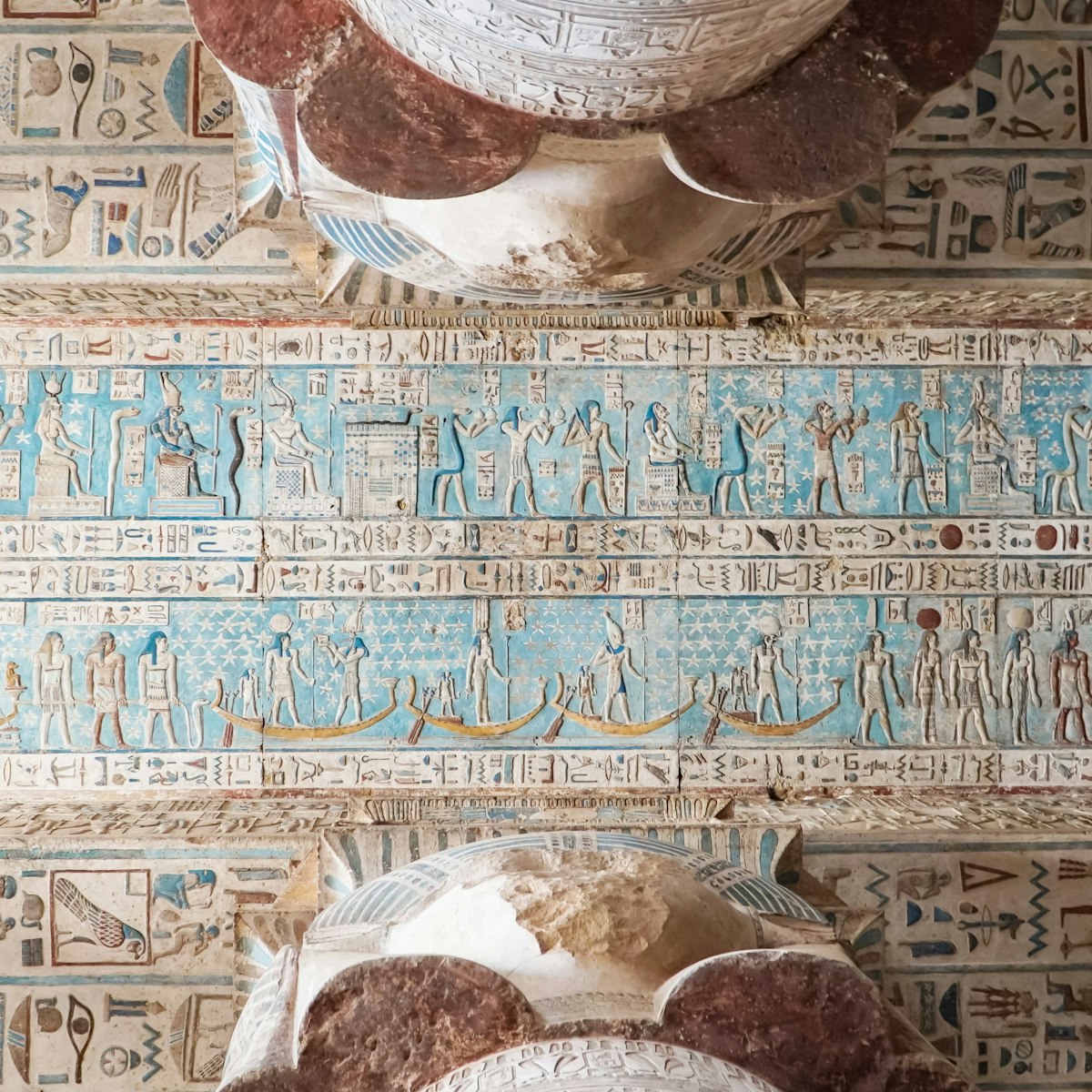Ramses III’s magnificent memorial temple of Medinat Habu, fronted by sleepy Kom Lolah village and backed by the Theban mountains, is one of the west bank's most underrated sites. This was one of the first places in Thebes closely associated with the local god Amun. At its height, Medinat Habu contained temples, storage rooms, workshops, administrative buildings, a royal palace and accommodation for priests and officials. It was the centre of the economic life of Thebes for centuries.
Although the complex is most famous for the funerary temple built by Ramses III, Hatshepsut and Tuthmosis III also constructed buildings here. They were later added to and altered by a succession of rulers through to the Ptolemies. When the pagan cults were banned, it became an important Christian centre, and was still inhabited as late as the 9th century AD, when a plague was thought to have decimated the town. You can still see the mud-brick remains of the medieval town that gave the site its name (medina means ‘town’ or ‘city’) on top of the enclosure walls.
The original Temple of Amun, built by Hatshepsut and Tuthmosis III, was later completely overshadowed by the enormous Funerary Temple of Ramses III, the dominant feature of Medinat Habu. But a chapel from the Hatshepsut period still stands on the right after you have passed the outer gates.
Ramses III was inspired in the construction of his shrine by the Ramesseum of his illustrious forebear, Ramses II. His own temple and the smaller one dedicated to Amun are both enclosed within the massive outer walls of the complex.
Also just inside, to the left of the gate, are the Tomb Chapels of the Divine Adorers, which were built for the principal priestesses of Amun. Outside the eastern gate, one of only two entrances, was a landing quay for a canal that once connected Medinat Habu with the Nile.
You enter the site through the unique Syrian Gate, a large two-storey building modelled after a Syrian fortress: as with the images of the pharaoh smiting his enemies, this harks back to the famous battles between Egyptians and Hittites, particularly at the time of Ramses II. If you follow the wall to the left, you will find a staircase leading to the upper floors. There is not much to see in the rooms but you’ll get some great views out across the village in front of the temple and over the fields to the south.
The well-preserved first pylon marks the front of the temple proper. Ramses III is portrayed in its reliefs as the victor in several wars. Most famous are the fine reliefs of his victory over the Libyans (whom you can recognise by their long robes, sidelocks and beards). There is also a gruesome scene of scribes tallying the number of enemies killed by counting severed hands and genitals.
To the left of the first court are the remains of the Pharaoh’s Palace; the three rooms at the rear were for the royal harem. There is a window between the first court and the Pharaoh’s Palace known as the Window of Appearances, which allowed the pharaoh to show himself to his subjects.
The reliefs of the second pylon feature Ramses III presenting prisoners of war to Amun and his vulture-goddess wife, Mut. Colonnades and reliefs surround the second court, depicting various religious ceremonies.
If you have time to wander about the extensive ruins around the funerary temple, you will see the remains of an early Christian basilica as well as a small sacred lake and, on the south side of the temple, the outline of the palace and the window, looking into the temple courtyard, where Ramses would appear.
It is a wonderful place to visit, especially in the late afternoon when the light softens and the creamy stone glows.








